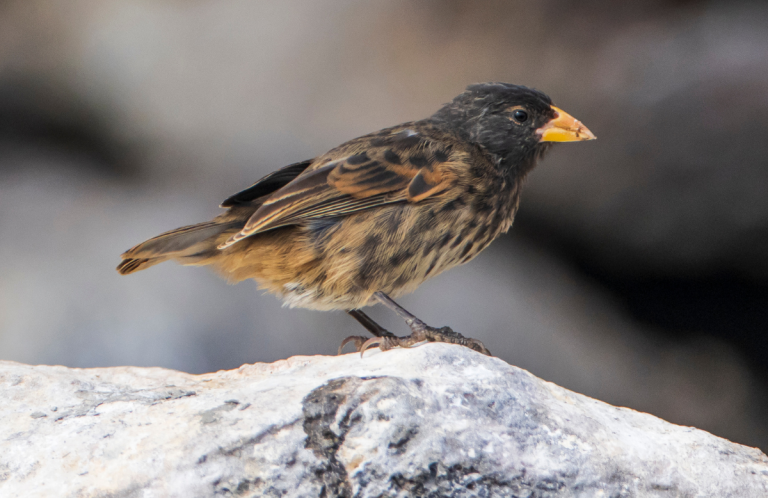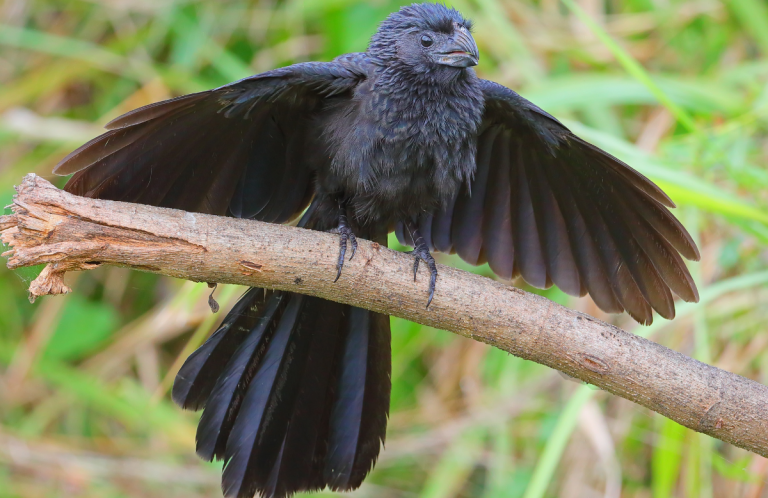 The dark-colored, long-tailed Marsh Antwren was discovered in 2004 and formally described in 2013, but is already in danger of disappearing. Now the race is on to protect this little marsh bird's remaining habitat in the shadow of São Paulo, South America's largest metropolis. Like many other birds, including the Black Skimmer and Least Tern, the species faces continual challenges by living in proximity to a booming urban population.
The dark-colored, long-tailed Marsh Antwren was discovered in 2004 and formally described in 2013, but is already in danger of disappearing. Now the race is on to protect this little marsh bird's remaining habitat in the shadow of São Paulo, South America's largest metropolis. Like many other birds, including the Black Skimmer and Least Tern, the species faces continual challenges by living in proximity to a booming urban population.
The main threat faced by the Marsh Antwren is habitat loss, particularly from sand mining, housing developments, and fish farming. Invasive species, including an introduced grass, are also destroying the bird's already-limited habitat.
Sign up for ABC's eNews to learn how you can help protect birds
Bird Found Nowhere Else
The Marsh Antwren is the only bird species endemic to the state of São Paulo: It can only be found in a few dozen small marshes at the headwaters of the Tietê and Paraíba do Sul river basins, around 30 miles east of the São Paulo metropolis.
It is unclear how extensive the Marsh Antwren's range used to be. But over the past century, this city of millions has grown up and now occupies part of the bird's relatively small range. The remaining areas, meanwhile, are vulnerable to development. The few birds that are left need immediate conservation action to survive.
Marsh Skulker
A secretive species, the Marsh Antwren lives deep in the marsh vegetation, where it forages for insects such as mosquitoes and caterpillars. The birds are reluctant to fly and typically do not leave their marsh territories, where they are usually found in pairs or family groups of four. Pairs travel close together and communicate with infrequent, short, and quiet calls. Both sexes will defend their territory.
This antwren prefers to skulk through the mid-level of the thickest marsh vegetation; when forced out of hiding, the birds fly to cover in short, quick dashes.

Sao Paolo Marsh Antwren female by Elvis Japão
ABC's Daniel Lebbin, Vice President for International Programs, describes his first glimpse of this rare species: “At the first marsh we visited, we saw a male skulking; at the next stop, we spotted a pair near a waterfall, popular among locals as a swimming hole. In both cases the birds traveled through dense vegetation over water, stayed deep in the cover of shadow without venturing into the open, and vocalized softly.
“Being so inconspicuous within a wet habitat that people might hesitate to wade into, it was not a surprise that they had remained undetected by scientists for so long.”
To Rescue a Scarce Species
ABC is working with SAVE Brasil and other partners to preserve important habitat for the antwren and protect some of São Paulo's few remaining marshes, with the ultimate goal of increasing available habitat for the species.
Lebbin is optimistic. “This effort, fortunately, already has strong support among many residents. And we are hopeful that a major producer of eucalyptus pulp, Fibria, which owns a large amount of land within the antwren's habitat and has shown interest in the project, will support efforts to conserve important habitat.”
There are other hopeful signs; for example, a project to rescue a group of antwrens threatened by dam construction was successful. Scientists captured 72 individuals at the dam and relocated them in nearby marshes, where they persisted and have successfully bred.
Donate to support ABC's conservation mission!



















































